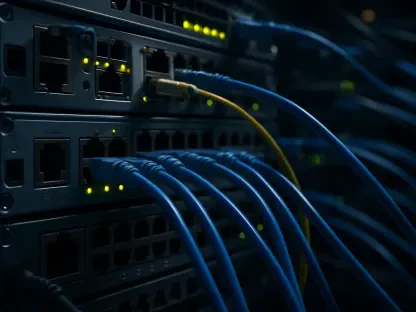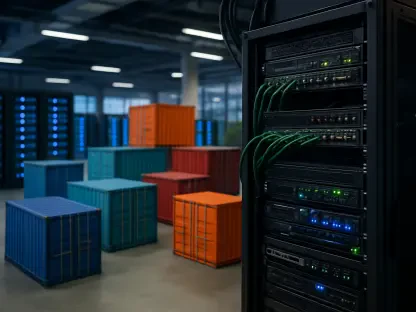In the fast-evolving landscape of technology, the integration of AI agents into networking and security has sparked both excitement and skepticism among industry professionals, who are eager to see if these tools can truly revolutionize their field. These autonomous software systems, designed to perceive, reason, and act independently, hold the promise of transforming how complex tasks such as network monitoring, threat detection, and configuration automation are managed. The vision is compelling—reducing human error, accelerating response times, and providing deeper insights into intricate systems. However, as adoption grows, a pressing question emerges: can these intelligent tools truly meet the high expectations set by engineers and IT experts, or are there significant gaps between aspiration and actual performance that must be addressed? This exploration seeks to dissect the potential of AI agents, diving into user priorities, market solutions, design challenges, and inherent risks. By separating hype from fact, the discussion aims to provide clarity on the role of AI in shaping the future of network management and cybersecurity.
Transforming Operations with AI Potential
The allure of AI agents in networking and security lies in their ability to operate beyond the limitations of traditional software, adapting dynamically through machine learning and real-time data analysis. Unlike static programs bound by predefined instructions, these agents can independently tackle repetitive and complex tasks, such as automating network configurations or swiftly identifying anomalies in traffic patterns. The anticipated benefits are substantial—streamlining workflows, minimizing manual intervention, and enhancing precision in decision-making. Industry stakeholders envision a future where human oversight is reserved for strategic priorities, while AI handles the operational grind. Yet, beneath this optimism, doubts linger about whether current technologies can fully deliver on such transformative promises, especially given the intricate and high-stakes nature of network environments.
Beyond the conceptual appeal, the practical implications of AI agents suggest a seismic shift in operational efficiency for organizations managing vast digital infrastructures. Tasks that once consumed hours of manual effort, like diagnosing connectivity issues or updating security protocols, could be executed in moments with greater accuracy. This efficiency is not merely about speed but also about scalability—enabling systems to handle growing data volumes and evolving threats without proportional increases in human resources. However, the reality often falls short of this ideal, as many AI tools struggle with contextual nuances or require significant customization to align with specific organizational needs. The gap between the envisioned seamless automation and the current state of implementation raises critical questions about readiness and reliability in real-world applications.
Community Insights on AI Priorities
Surveys conducted across platforms like Cisco DevNet, LinkedIn, and X/Twitter reveal a clear consensus among engineers and IT professionals regarding the desired applications of AI agents in their field. A significant 37% of respondents prioritize configuration automation, reflecting a pressing need to simplify the often tedious and error-prone process of setting up network parameters. Meanwhile, 32% emphasize network monitoring, underscoring the demand for tools that provide real-time visibility into system health and performance. These preferences highlight a collective focus on addressing immediate, tangible infrastructure challenges rather than peripheral tasks, painting a picture of a workforce eager for solutions that directly enhance day-to-day operations. But do existing AI tools match this demand, or is there a disconnect in focus?
Delving deeper into community feedback, threat and vulnerability detection also emerges as a critical area of interest, with 22% of professionals identifying it as a key application for AI agents. This focus on security applications is hardly surprising given the escalating sophistication of cyber threats facing modern networks. The expectation is that AI can not only detect potential risks faster than human analysts but also predict and mitigate them before they escalate into breaches. However, while the enthusiasm for operational and security-focused tools is evident, there remains uncertainty about whether current solutions can consistently deliver accurate and actionable insights. The alignment—or lack thereof—between user needs and AI capabilities continues to shape the discourse around adoption and trust in these technologies.
Navigating the AI Solutions Ecosystem
The market for AI agents in networking and security is a dynamic space, brimming with diverse offerings that cater to a spectrum of organizational needs and budgets. Open-source platforms, often accessible through repositories like Cisco DevNet Code Exchange, provide flexibility with features such as natural language-based management of network devices, empowering users to experiment and customize solutions. On the other hand, commercial products from industry leaders like Cisco, with tools such as AI Assistant and AI Canvas, alongside offerings from Nanites AI and Selector AI, deliver enterprise-grade capabilities including real-time telemetry and multivendor compatibility. This variety signals a maturing ecosystem, but it also highlights disparities in functionality and focus that could influence adoption rates.
While the availability of both open-source and commercial AI solutions fosters innovation and choice, it also presents a challenge for organizations seeking the right fit for their specific contexts. Commercial tools often come with polished interfaces, integrated workspaces, and advanced analytics for predictive planning, making them appealing for large-scale deployments. Conversely, open-source options offer cost-effective alternatives and community-driven enhancements, though they may lack the robustness or support needed for critical operations. The disparity in maturity and feature sets between these categories suggests that not all solutions are equally equipped to bridge the gap between high expectations and practical performance, leaving decision-makers to weigh trade-offs carefully.
Overcoming Design and Model Barriers
At the heart of building effective AI agents for networking and security lies the critical task of selecting the appropriate underlying models that power their decision-making capabilities. Specialized models like Foundation-Sec-8B, tailored for cybersecurity applications, alongside evaluation benchmarks such as Network Operational Knowledge (NOK) and CTIBench, provide frameworks for assessing performance in domain-specific scenarios. High-performing options like Gemini 2.5 Pro and Claude Sonnet 4.0 Thinking are frequently cited for their adaptability to complex tasks. However, choosing the right model is a nuanced process, as mismatches can result in inefficiencies, misinterpretations, or outright failures, posing a significant barrier to realizing the full potential of AI in this space.
Beyond model selection, the design of AI agents must account for the intricate demands of networking and security environments, where precision and reliability are non-negotiable. A poorly designed agent might struggle to interpret contextual data or fail to integrate seamlessly with existing systems, leading to operational disruptions rather than improvements. Engineers face the daunting task of balancing cutting-edge AI capabilities with practical constraints, such as computational resources and compatibility with legacy infrastructure. As the field advances, the emphasis on rigorous testing and iterative refinement becomes paramount to ensure that these intelligent systems can handle real-world complexities without introducing new points of failure.
Addressing Security Vulnerabilities in AI Deployment
The deployment of AI agents in networking and security brings undeniable advantages, but it also ushers in a host of vulnerabilities that demand urgent attention. Threats such as model jailbreaking, where malicious actors exploit weaknesses to manipulate outputs, and prompt injection, which tricks agents into executing unintended actions, pose serious risks to system integrity. Equally concerning is the phenomenon of hallucination, where AI generates incorrect or fabricated information, potentially leading to flawed configurations or missed threats. As these tools become more integral to critical operations, the stakes of such errors grow exponentially, necessitating a proactive approach to safeguard networks.
Mitigating the risks associated with AI agents requires a multifaceted strategy that prioritizes robust security frameworks and continuous oversight. Industry consensus points to the importance of implementing strict guardrails, such as input validation and output verification, to prevent erroneous actions from cascading into broader failures. Additionally, addressing issues like model poisoning—where training data is corrupted—demands advanced detection mechanisms and regular updates to maintain resilience. The dual nature of AI as both a potential defender and a liability underscores the need for meticulous design and deployment practices, ensuring that innovation does not come at the expense of stability or trust in networked systems.
Balancing Innovation with Practical Safeguards
Reflecting on the journey of AI agents in networking and security, it’s evident that the past few years have marked a period of ambitious experimentation and cautious implementation. The industry has grappled with lofty aspirations of fully automated systems while navigating the sobering realities of technical limitations and security threats. Significant strides have been made in automating operational tasks and enhancing threat detection, yet vulnerabilities like model errors and data misinterpretation have often tempered enthusiasm. The experiences of that era have laid a foundation for understanding the delicate balance required between pushing technological boundaries and ensuring reliability.
Looking ahead, the path forward hinges on actionable strategies that prioritize both innovation and safety. Developing standardized benchmarks for AI performance in networking and security contexts could help organizations make informed choices about tools and models. Simultaneously, fostering collaboration between open-source communities and commercial providers might accelerate the creation of interoperable, secure solutions. Investing in training programs to equip IT professionals with skills to oversee AI deployments will also be crucial. By focusing on these steps, the industry can move closer to a future where AI agents not only meet expectations but redefine what’s possible in managing and protecting digital infrastructures.









